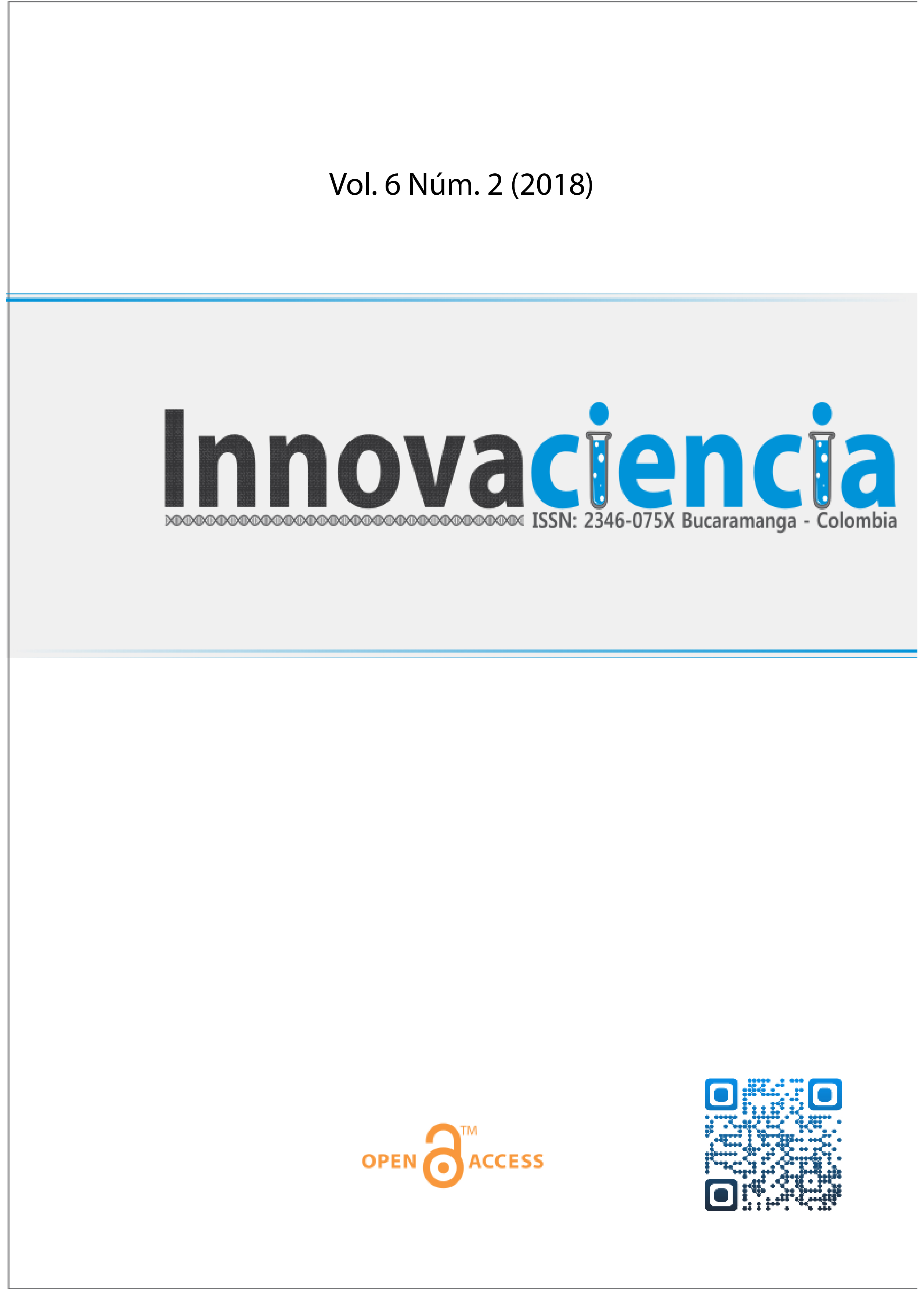Respuesta de termoluminiscencia del sistema de vidrio anfitriónde sílice borato de zinc (ZBS) irradiado con electrones y fotones
DOI:
https://doi.org/10.15649/2346075X.484Palabras clave:
Thermoluminescence dosimetry, Borate silica, Electron and photon TLD glass irradiation.Resumen
Introduction: Glass phosphors are broadly used to determine patient doses in radiation diagnostic and radiotherapy because of their good features, the dose ranges of interest are approximately
0.1 -100 mGy for clinical x-ray diagnostics, and 1-5Gy for radiotherapy. Materials and Methods: Borate silica glass samples were prepared using melt quenching technique, XRD analysis confirms that the glass system is amorphous (non- crystalline). TL properties of glass were investigated such as optimum concentration, heating rate, and annealing procedure. The optimum glass samples of 45ZnO-45B 2O3-10SiO2 are used as glass radiation dosimeter. The samples were irradiated using 6MeV and 6MV photon beams in a
dose range (0.5-4) Gy. Results and Discussion: There is single and wide thermoluminescence glow curve that offering with maximum intensity at about 165 oC. Linear dose-response behavior has been observed in this dose range for both irradiation electron and photon beam. Sensitivity and minimum detectable dose have been found. The sensitivity of 6MeV is 1.7 greater than the sensitivity of 6MV photon energy. Conclusions: The results point out that this glass has the potential to be used as an electron and photon radiation dosimeter.
Referencias
Bahri Ttk, Wagiran H, Hussin R, Saeed M, Hossain I, Ali H. Dosimetric Properties of Germanium Doped Calcium Borate Glass Subjected To 6mv And 10mv X-Ray Irradiations. Nuclear Instruments and Methods in Physics Research Section B: Beam Interactions with Materials And Atoms. 2014b; 336:70-3. https://doi.org/10.1016/j.nimb.2014.06.022
Hossain I, Wagiran H, Yaakob N. Thermoluminescence Of Ge-And Al-Doped Sio2 Optical Fibers Subjected To 0.2-4.0 Gy External Photon Radiotherapeutic Dose. Journal of Applied Spectroscopy. 2013; 80(4):620-3. https://doi.org/10.1007/s10812-013-9816-2
Wagiran H, Hossain I, Bradley D, Yaakob A, Ramli T. Thermoluminescence Responses Of Photon And Electron Irradiated Ge-And Al-Doped Sio2 Optical Fibres. Chinese Physics Letters. 2012; 29(2):027802. https://doi.org/10.1088/0256-307X/29/2/027802
Yaakob N, Wagiran H, Hossain I, Ramli A, Bradley D, Hashim S, Et Al. Electron Irradiation Response On Ge And Al-Doped Sio 2 Optical Fibres. Nuclear Instruments and Methods In Physics Research Section A: Accelerators, Spectrometers, Detectors And Associated Equipment. 2011; 637(1):185-9. https://doi.org/10.1016/j.nima.2011.02.041
Icru Fq. Units for Ionizing Radiation. Icru Report. 1998; 60.
Alajerami Ysm, Hashim S, Ramli At, Saleh Ma, Saripan Mi, Alzimami K, Et Al. Thermoluminescence Responses Of Photon-And Electron-Irradiated Lithium Potassium Borate Co-Doped With Cu+ Mg Or Ti+ Mg. Applied Radiation And Isotopes. 2013; 78:21-5. https://doi.org/10.1016/j.apradiso.2013.03.095
Lim Ty, Wagiran H, Hussin R, Hashim S. Thermoluminescence Response Of Dysprosium Doped Strontium Tetraborate Glasses Subjected To Electron Irradiations. Applied Radiation and Isotopes. 2015; 102:10-4. https://doi.org/10.1016/j.apradiso.2015.04.005
Aboud H, Wagiran H, Hussin R, Ali H, Alajerami Y, Saeed M. Thermoluminescence Properties Of The Cu-Doped Lithium Potassium Borate Glass. Applied Radiation and Isotopes. 2014; 90:35-9. https://doi.org/10.1016/j.apradiso.2014.01.012
Bahra N, Jaafar M, Iskandar S, Cheng S. Effect Of Different Concentrations Of Doped Rare Earth Element On Borate-Silica Oxide Glass Structure. Journal of Optoelectronics And Biomedical Materials Vol. 2015; 7(2):47-52.
Bahra Mohammed Msj, H.Wagiran. Effect of Cu2o on the Thermoluminescence Properties Of Zno-B2o3-Sio2 Glass Sample Journal Of Luminescence. 2017; 190: 228-33. https://doi.org/10.1016/j.jlumin.2017.05.049
Furetta C. Handbook Of Thermoluminescence: World Scientific; 2003. https://doi.org/10.1142/9789812564863
Descargas
Publicado
Cómo citar
Descargas
Número
Sección
Licencia
Todos los artículos publicados en esta revista científica están protegidos por los derechos de autor. Los autores retienen los derechos de autor y conceden a la revista el derecho de primera publicación con el trabajo simultáneamente licenciado bajo una Licencia Creative Commons Atribución-NoComercial 4.0 Internacional (CC BY-NC 4.0) que permite compartir el trabajo con reconocimiento de autoría y sin fines comerciales.
Los lectores pueden copiar y distribuir el material de este número de la revista para fines no comerciales en cualquier medio, siempre que se cite el trabajo original y se den crédito a los autores y a la revista.
Cualquier uso comercial del material de esta revista está estrictamente prohibido sin el permiso por escrito del titular de los derechos de autor.
Para obtener más información sobre los derechos de autor de la revista y las políticas de acceso abierto, por favor visite nuestro sitio web.
















